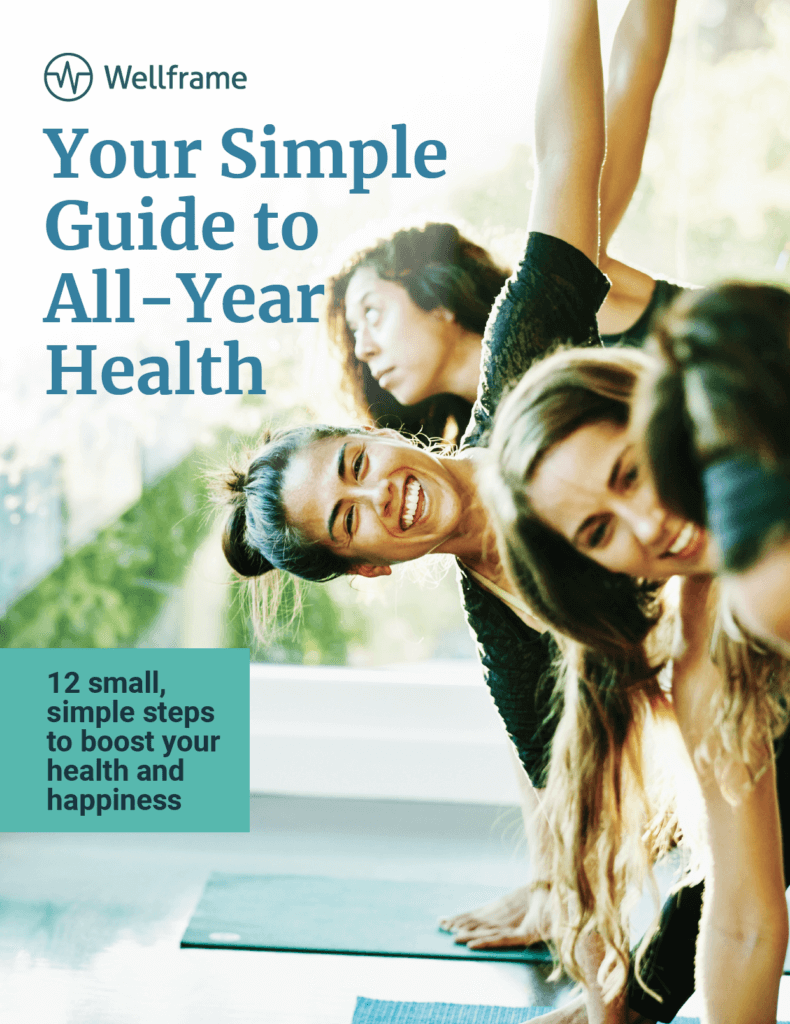7 health screenings you need beyond your annual physical
Find out which preventive tests and health screenings can help you stay well, plus how to fit them all into your schedule.
Like many people, you probably schedule an annual physical with your doctor. These exams are a great way to get a sense of your health now. They can also help your doctor find any health risk factors and create a personalized prevention plan. But checking the annual checkup box shouldn’t mean you’re done with your healthcare for the year. In fact, there are a handful of other health screenings that belong on your checklist — or at least your radar.
If you’re healthy, the list won’t be long, assures Morton Tavel, MD, a clinical professor emeritus of medicine at the Indiana University School of Medicine. Which ones you need depends on your age, sex, medical history, and the latest science. Here are 7 recommended health screenings to ask your doctor about today.
Ask Your Provider About These 7 Health Screenings
1. Colon Cancer Screening
The recommended age for getting your first screening for colon cancer used to be 50. Recently, the U.S. Preventive Services Task Force dropped the age to 45. The reason? Cases of colon cancer among young and middle-aged people are on the rise, and so are mortality rates. By doing more screenings earlier, experts hope to find more cases of cancer in the early stages, when it’s easier to treat.
The best test to check for colon cancer is a colonoscopy. That’s where a doctor uses a flexible tube with a camera to check your rectum and colon for polyps while you’re sedated. Polyps are small clumps of tissue, and most are harmless. But some can become cancerous. They can be removed during a colonoscopy for testing.
If your first colonoscopy is normal, you need to repeat it only every 10 years, says Dr. Tavel, author of Health Tips, Myths, and Tricks: A Physician’s Advice. If your doctor does find polyps, you might have to have the test done more frequently.
2. Mammogram
This is a breast x-ray that helps find signs of cancer. The recommendations for mammograms vary depending on your gender identity:
- Cisgender women: Women ages 45 to 54 should get a mammogram every year, recommends the American Cancer Society (ACS). After that, they say you can switch to every 2 years. The ACS also states that screenings should continue for as long as you are in good health and are expected to live at least 10 more years.
- Transgender women and men: Hormone therapy can raise the risk of breast cancer. The general recommendation is that transgender women and men who have taken hormone therapy for 5 or more years should have an annual mammogram starting at age 50. These recommendations change based on factors like age and duration of hormone therapy. They come from the University of California, San Francisco Center of Excellence for Transgender Health.
If you have a family history of breast cancer, your doctor may advise earlier screening. But screening more often than recommended could backfire. It ups the chances of having a false positive — a result that says the disease is there when it’s not. That can lead to anxiety and unnecessary surgery, says Dr. Tavel.
3. HPV Test and Pap Test
An HPV test looks for the human papillomavirus, a virus that can cause cervical cancer. A Pap test looks for abnormal cells that can lead to cervical cancer. Sometimes both tests are done together (known as an HPV/Pap co-test).
Screening for cervical cancer should start at age 21. How often you get screened depends on your age. If you’re 21 to 29 years old, you should have a Pap test every 3 years. Starting at age 30, Pap tests are recommended every 3 years. Or an alternative would be to have an HPV test or HPV/Pap co-test every 5 years. At age 65 you can stop unless you’ve had an abnormal test in the past 10 years.
4. Cholesterol Test
Nearly 93 million U.S. adults aged 20 or older have high cholesterol. But many people don’t know their cholesterol is high because there are no symptoms. The best way to find out if you have high cholesterol? Get a simple blood test. It will look at 4 things:
- Total cholesterol. This is the sum of all the cholesterol in your blood. Your goal: below 200 mg/dL.
- Low-density lipoprotein (LDL). LDL is the “bad” cholesterol that causes plaque to build up in your arteries, which can lead to a heart attack or stroke. Your goal: less than 70 mg/dL if you have or are at high risk of coronary artery disease. If not, less than 100mg/dL.
- High-density lipoprotein (HDL). This “good” cholesterol helps carry LDL cholesterol away and out of your arteries. Your goal: 60 mg/dL or higher.
- Triglycerides. This is a type of fat in your blood that gets stored in your cells. High triglyceride levels are linked with a higher risk of stroke and heart disease. Your goal: below 150 mg/dL.
You should get your cholesterol checked once in your teens. After age 20, get it tested every 5 years. If you’re at a higher risk of heart disease — like if you have a family history of heart disease or diabetes, or if you have high cholesterol — talk to your doctor about having it checked more often.
5. Blood Glucose
This blood test checks your blood sugar levels to see if you have type 2 diabetes or if you’re at risk for developing it. There are 2 main tests:
- A1C Test. This measures your average blood sugar level over several months. Here’s what your results mean:
- Below 5.7% = normal
- Between 5.7% and 6.4% = prediabetes
- 6.5% or higher = diabetes
- Fasting Blood Sugar Test. This measures your blood sugar after fasting (not eating) overnight. Here’s how to read your results:
- 99 mg/dL or lower = normal
- 100-125 mg/dL = prediabetes
- 126 mg/dL or higher = diabetes
Everyone should have 1 of these tests beginning at age 45. If it’s normal, you can repeat it every 3 years. But start earlier and/or have testing done more often if you have risk factors for diabetes. Those include being overweight, having high blood pressure or cholesterol, or having a family history of type 2 diabetes.
6. PSA Test
This blood test can help detect early prostate cancer. It measures a protein made by the prostate gland called a prostate-specific antigen (PSA). But it’s a controversial test. This is because many people with prostates who have a high level of PSA don’t actually have cancer (known as a false-positive result). The test may also show normal results even when someone does have cancer (known as a false-negative result).
The Centers for Disease Control and Prevention recommends that those aged 55 to 69 talk with their doctor to decide if a PSA test is right for them. It may make sense to get the test if you have certain risk factors, such as being Black or having a strong family history of the disease, says Dr. Tavel.
Your doctor may also talk to you about a physical exam for prostate cancer called a digital rectal exam. It’s less effective than a PSA test, according to the American Cancer Society. But it can be better at finding prostate cancer in people with normal PSA levels. The CDC does not recommend routine screenings for those age 70 and older.
7. CT Lung Scan
This low-dose x-ray screens your lungs for cancer. Research shows that a yearly CT lung scan can cut the risk of death from cancer by up to 20% in long-term heavy smokers. It’s recommended for anyone aged 55 to 80 who smoked 1 pack per day for 20 years, or 2 packs per day for 10 years, says Dr. Tavel. For people who fit the criteria, the scan is covered by most health insurance.
Your Next Step: Schedule the Health Screenings That Are Right for You
Knowing about the key health screenings above is step 1 for staying well. But for them to work, you must also take step 2: scheduling the screenings you need.
Start by gathering your family medical history. Make a list of any diseases that run in your family (you might have to make a few phone calls). Then share it with your doctor to help them create your list of necessary screenings.
If you need help scheduling and keeping track of it all, don’t be afraid to ask. Your doctor’s support staff is a great place to start. Also, ask your employer or health plan if it offers a digital health management tool like Wellframe. This easy-to-use app can help you connect with someone on your care team to book appointments or ask questions about your test results without making a single phone call. Plus, you can schedule reminders, so you don’t forget to take care of your future self.
Contact your health plan to see if you’re eligible for Wellframe.
Looking for tips to prioritize your health all year round?
Get Your Simple Guide to All-Year Health, where we share steps to boost your health and happiness. PS, they’re simple and easy! Download the PDF to learn more.

